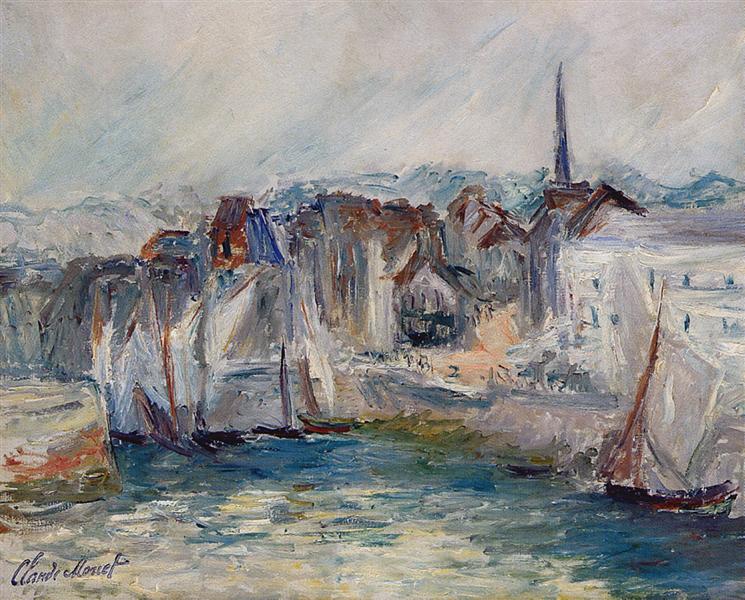Description
The work "Boats in the port of Honfleur" (1917) by Claude Monet is a vibrant and evocative testimony of the impressionist style, in which the master De Argenteuil continues to explore the fleeting beauty of natural and urban scenarios. In this painting, Monet captures the essence of the port of Honfleur, a place that had been a source of inspiration for many artists of his time and a light and color meeting point. This work, created in the context of World War I reflects an almost nostalgic serenity, contrasting with the tumult of the outside world.
At first glance, the composition is organized so that ships become main actors in the port landscape. His disposition on the canvas reveals the fascination of Monet by the way the light interacts with the surfaces of water and structures on the shore. Silueted profiles, seem to be calm, anchored in the tranquility of the port. Monet uses a soft palette that includes blue, gray and warm tones, providing a sensation of harmony and peace that is characteristic of its final works. The reflections on the water add an almost ethereal dimension to the painting, while the rapid and loose brushstrokes of the artist suggest movement and fluidity, a masterful technique that invites the viewer to experience the scene in real time.
The representation of heaven is also remarkable in this work. The clouds slide into a subtle degraded gray and blue, reflecting the changing atmosphere of the day; This is one of the peculiarities of Monet's work, who used to study the variations of light at different times. The way in which the impressionist captures natural light becomes another character of the work, giving life to the scene and transforming it into a visual experience.
Although painting lacks prominent human figures, this absence reinforces the feeling of tranquility and restlessness that it transmits. The loneliness of the ships in the port seems to talk about a time stopped, of the life that continues, even in difficult times. Often, Monet evokes the human figure with subtlety; On the other hand, here the ships are the symbol of life itself, a representation of the community and the activity that once filled those spaces. The nuances in the tones of the ships and their candles, which delicately kiss the water, reaffirm Monet's ability to transform everyday elements into visual poetry.
"Boats in the port of Honfleur" reminds us that landscapes and places often carry stories that burn at the bottom of collective memory. In this particular case, the port of Honfleur, known for its beauty and its connection with artists such as Eugène Boudin and other precursors of impressionism, becomes a space where the anguish of war seems to be drowned by the serenity of nature.
Observing this piece, it is inevitable to contemplate the evolution of impressionism and the role in which Monet becomes a true pioneer of this artistic style. Throughout his career, his search for light and color has inspired generations of later artists, who have continued to explore the landscape as a cultural and emotional space. "Boats in the port of Honfleur" is a celebration of both technique and artistic vision, a reflection of the world in its purest form and, at the same time, a whisper in history that gives it an additional meaning within the Claude Monet's work.
KUADROS ©, a famous paint on your wall.
Hand-made oil painting reproductions, with the quality of professional artists and the distinctive seal of KUADROS ©.
Reproduction service paintings With a guarantee of satisfaction. If you are not completely satisfied with the replica of your painting, we refund your money 100%.

